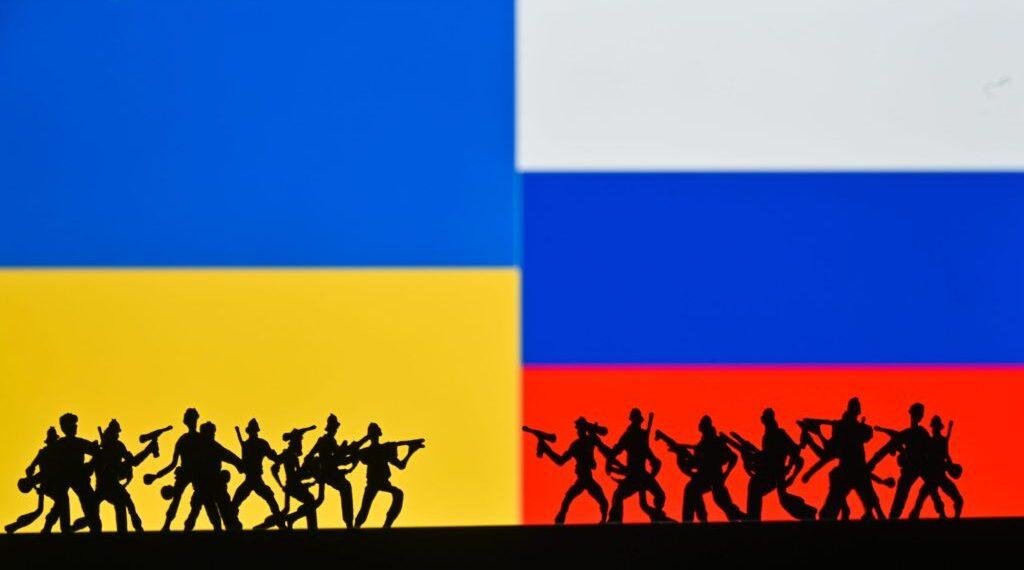The Russia-Ukraine war has continued to dominate global headlines for more than a decade, with no clear end in sight. What started as a political crisis after Ukraine’s Revolution of Dignity in 2014 has spiraled into one of the deadliest wars of the 21st century, leaving tens of thousands of civilians dead and millions displaced. Despite repeated peace efforts by the United States, the United Nations, and other influential nations, the conflict remains bloody, complex, and unpredictable. The question on the minds of many today is: Is peace in Ukraine truly possible, or is the world bracing for an endless war?
On Monday, Ukrainian officials confirmed another tragic chapter in the war when a Russian drone strike in Kharkiv killed three people, including a child, and injured more than a dozen others. The strike came just hours after a ballistic missile slammed into the same city near the Russian border, leaving at least 11 more residents injured, according to Mayor Igor Terekhov. As if that was not enough, Russian forces later targeted the Sumy region with fresh bombings and drone strikes, injuring a 57-year-old woman and a 43-year-old driver. The intensity of these strikes underscores the ongoing reality of daily violence that Ukrainians endure.
Regional officials, including Oleg Grygorov of the Sumy military administration, described the double attack as a grim reminder that the war is far from slowing down. For many Ukrainians, survival has become the only daily goal, with families torn apart and entire towns reduced to rubble. Yet, in Moscow, the narrative remains firm, President Vladimir Putin insists Russia’s actions are justified, claiming the need to protect Russian-speaking regions and counter Western influence.
The roots of this conflict can be traced back to 2014, when Ukraine’s pro-European shift triggered Russia’s annexation of Crimea. What followed was the rise of separatist groups in Donbas, heavily supported by Moscow. Groups like the Donbas People’s Militia and the Army of the South-East began an offensive against Ukrainian forces, sparking a war that has only intensified over the years. The Ukrainian government has consistently denounced these groups as terrorists, accusing Russia of sponsoring war crimes and destabilizing its sovereignty.
Since Russia’s full-scale invasion on February 24, 2024, the war has escalated beyond the borders of Ukraine. Western nations, led by the United States and NATO allies, have poured billions of dollars into military aid for Kyiv. At the same time, global food and energy markets have been disrupted, sparking inflation and economic instability in many countries. The war, therefore, is no longer just a European crisis but a global challenge affecting everyone from African farmers to Asian energy consumers.
Despite the devastation, peace efforts have been relentless but fruitless. United States President Donald Trump recently attempted to mediate direct talks with President Putin in Alaska. The much-publicized meeting raised hopes briefly, but the talks collapsed without any agreements. Trump emphasized the need to address the “root causes” of what he termed “the Ukrainian crisis,” but Kyiv dismissed the move as weak and one-sided, accusing Moscow of using negotiations as a smokescreen while intensifying military operations. This failed attempt is just one of many examples showing how elusive peace remains.
Read Also:
- World Cup can be an incentive for Russia to end Ukraine war – Trump
- Russia warns of World War 3 if NATO defends Ukraine
- Africa food crisis looms as Russia, Ukraine war continues
The human cost of the war is staggering. According to the United Nations Office of the High Commissioner for Human Rights (OHCHR), as of July 31, 2025, at least 49,431 civilians have been killed and 35,548 injured since the war began. These numbers represent more than just statistics; they represent children who will never grow up, parents who will never return home, and entire communities wiped off the map. The tragedy extends far beyond Ukraine’s borders, with over 4 million refugees now living in neighboring countries such as Poland, Hungary, and Romania.
The United Nations and its humanitarian partners have been racing against time to provide aid. In March 2022, the UN launched a $1.7 billion Flash Appeal to provide urgent relief, including food, shelter, and medical care. The UN Mine Action Service (UNMAS) has also been working tirelessly to address the danger of unexploded ordnance. Paul Heslop, a UNMAS advisor, recently warned that contaminated land in Ukraine not only threatens lives but also destroys any chance of recovery and livelihoods. Fields once used for farming are now littered with deadly explosives, robbing families of their only source of income.
Yet, even with billions of dollars in aid, the humanitarian crisis is deepening. The UN projects that around 12 million people in Ukraine will require humanitarian assistance in the coming months. Cities like Mariupol, Kharkiv, and Bakhmut, once thriving centers of life, now stand as symbols of destruction and despair. Aid groups warn that without a significant breakthrough in peace talks, Ukraine could face one of the worst humanitarian disasters in modern history.
Geopolitically, the Russia-Ukraine war has reshaped the global order. NATO has expanded its presence in Eastern Europe, Finland and Sweden have joined the alliance, and Western sanctions against Russia have tightened. However, Moscow has responded by deepening its alliances with China, Iran, and other nations resistant to U.S. dominance. The war has therefore created a new Cold War-like divide, raising concerns that a wider global confrontation could emerge if peace remains out of reach.
So, is peace in sight? At the moment, the answer seems grim. With each passing day, drone strikes, missile attacks, and civilian casualties continue to dominate the headlines. Russia appears unwilling to back down, while Ukraine, emboldened by Western support, is determined not to surrender its sovereignty. Mediation efforts have so far produced little more than photo opportunities and press statements.
The world is left grappling with a sobering reality: the Russia-Ukraine war may not end anytime soon. As the conflict drags on, the voices calling for peace grow louder, but the sound of artillery fire continues to drown them out. For millions of Ukrainians, the hope for peace is not just a political aspiration—it is a matter of life and death.
Until world leaders can find common ground and bring both sides to genuine negotiations, the question “Is there peace in sight?” will continue to haunt the international community. For now, Ukraine bleeds, Russia pushes forward, and the rest of the world watches anxiously, waiting for the day when the guns will finally fall silent.






